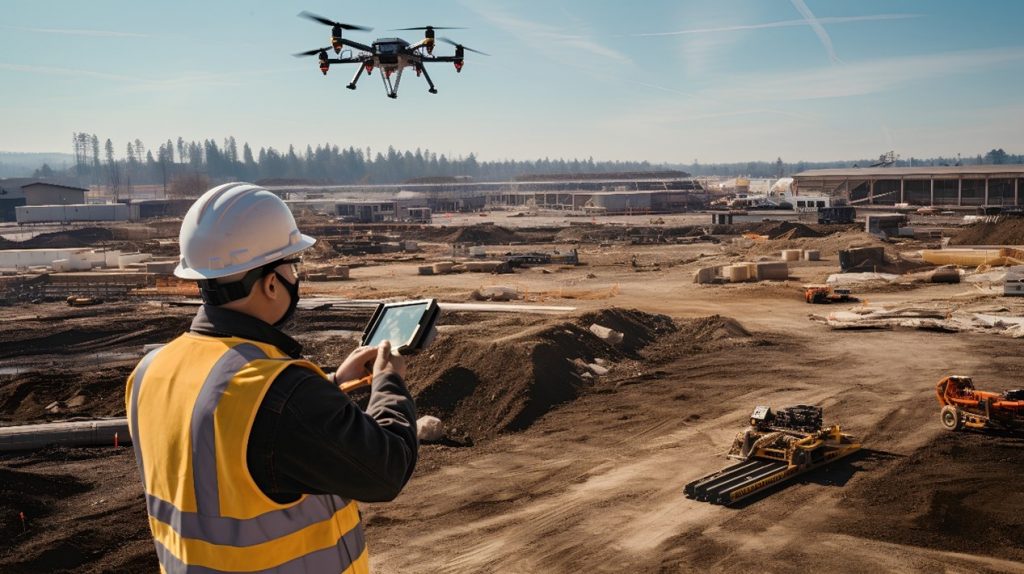Erik Brogan of Minnesota works in the construction industry. In the following article, Erik Brogan discusses how technology, such as drones, are revolutionizing construction sites surveys, inspections, and project management.
The past few years have seen drones become one of the most talked about construction trends. Exhibiting a
239% growth in drone use year-on-year, construction applications for this technology is the highest than any other commercial field. And since they bring a whole host of benefits, such as efficiency, reduced expenses, improved data accuracy, and enhanced safety standards, it's unsurprising.
Erik Brogan explains that from site analysis to inventory checking to project planning to structure inspecting, drones are proving their worth across the construction board, revolutionizing one area at a time.
Transforming the Site Analysis Sector
Erik Brogan says that the initial step of any construction project involves analyzing the site. Thanks to drone-based surveying, site analysis can be conducted regularly and quickly, guaranteeing up-to-date information and ensuring the project's progress is monitored consistently.
Traditional methods (e.g., rover and base surveying) waste valuable time and capital as professionals are forced to wait for the results. Drones are easy to use and output the same information in immaculate time and accuracy. Everything from the site's topography to the project's progress is captured and recorded in one quick fly over.
Bringing Their Surveying Capabilities to Inventories
While initially reserved for earthworks, drones' surveying capabilities have since evolved for other uses. Namely, inventory tracking for smaller construction companies. Such firms use drones to fill out inventory assessments, collecting much more information and reducing both costs and time.
Erik Brogan of Minnesota explains that many industry experts echo these statements, adding they also decrease the otherwise dangerous activity of approaching
hard-to-reach areas that drones can easily survey.
For larger projects, drones are used to rapidly stockpile inventories to ensure there are enough building materials on site to complete the work. As construction company owners know, stockpiles are significant financial assets, so the ability to establish the number of resources available is vital for projects' longevity.
Planning and Designing Builds Like Never Before
Erik Brogan says that combining drone surveying with a complete survey software allows professionals to create 3D site images to compare designs to the as-built documents. But this is about more than simple comparisons.
The tools can plan major project elements, making sure that the plans are completely aligned with expectations before construction starts. Firms around the world are even using 3D models to provide virtual walkthroughs, showcase progress, detect hazards that could cause delays, and resolve disputes between contractors.
Erik Brogan of Minnesota explains that on the surface, there's no denying that drones are primarily used for site surveying. However, digging a little deeper (and pairing it with in-depth software) opens a whole new world of drone-based opportunities in the industry.
 Providing Newfound Project Reporting and Collaboration Methods
Providing Newfound Project Reporting and Collaboration Methods
Clients want transparency and drones provide exactly that. They produce stunning aerial views, providing clients with the project's progression — a particularly useful feature for those who cannot be present on the site.
In addition, this technology is improving collaboration for internal teams, automatically sending information to those who need it during flyovers. All the project's professionals (e.g., construction managers, owners, engineers, design teams, and workers) can access the information acquired by the drone at the same time, catching any mistakes and creating a much-needed paper trail.
Easy Structure Inspecting and Photographing
Erik Brogan says that construction teams are steadily replacing bulk scaffolding and heavy machinery with drones for inspection purposes. They can easily be flown around structures to analyze minute details, ensure stability, and provide high-res photographs. Couple that with thermal sensors and professionals can rapidly detect cold spots, heat leaks, and electrical faults. Nothing else provides such a high degree of quality assurance.
Keeping Personnel Safe
Worker safety is any trusted company's top priority. According to the folks at BigRentz, falls account for a whopping
34% of construction fatalities, as they're often climbing unsteady platforms and traversing hazardous conditions. Drones can replace workers in such situations, reducing the risk people face on the field.
Erik Brogan of Minnesota adds that managers can utilize drones to monitor sites for safety issues, making sure workers are adequately balanced and nothing is loose.
Construction's Future Lies in Drones
Drone technology has come a long way, but it's far from its final form. The aircrafts' abilities today let them cut time, labor, risk, and costs, while increasing accuracy, workflow, efficiency, and communication. And as more firms buy in to the technology, the construction life cycle stands a brilliant chance of acquiring a seamless, streamlined life cycle.
 Providing Newfound Project Reporting and Collaboration Methods
Providing Newfound Project Reporting and Collaboration Methods